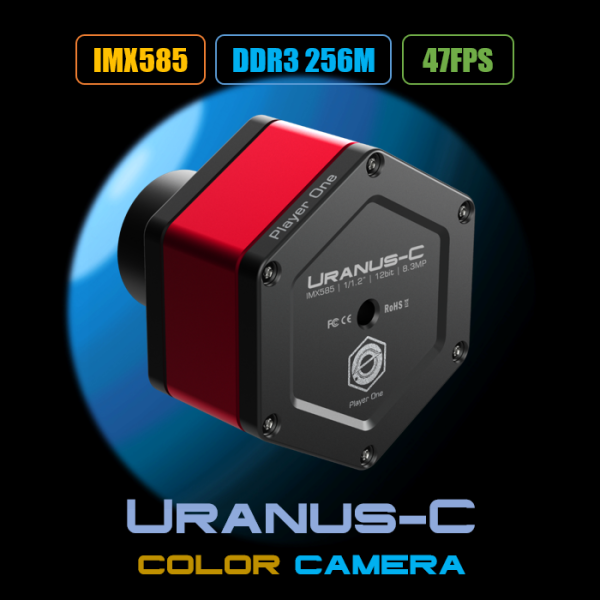Uranus-C is (IMX585) camera developed by Player One Astronomy, which adopts the newest Sony IMX585 1/1.2” format color sensor. The 2.9um pixel size accommodates a well depth of 38.8Ke with a total of 8.3MP (the resolution is 3856*2180), and the diagonal is 12.85mm.
Player One Astronomy Uranus-C USB3.0 Color Camera (IMX585)
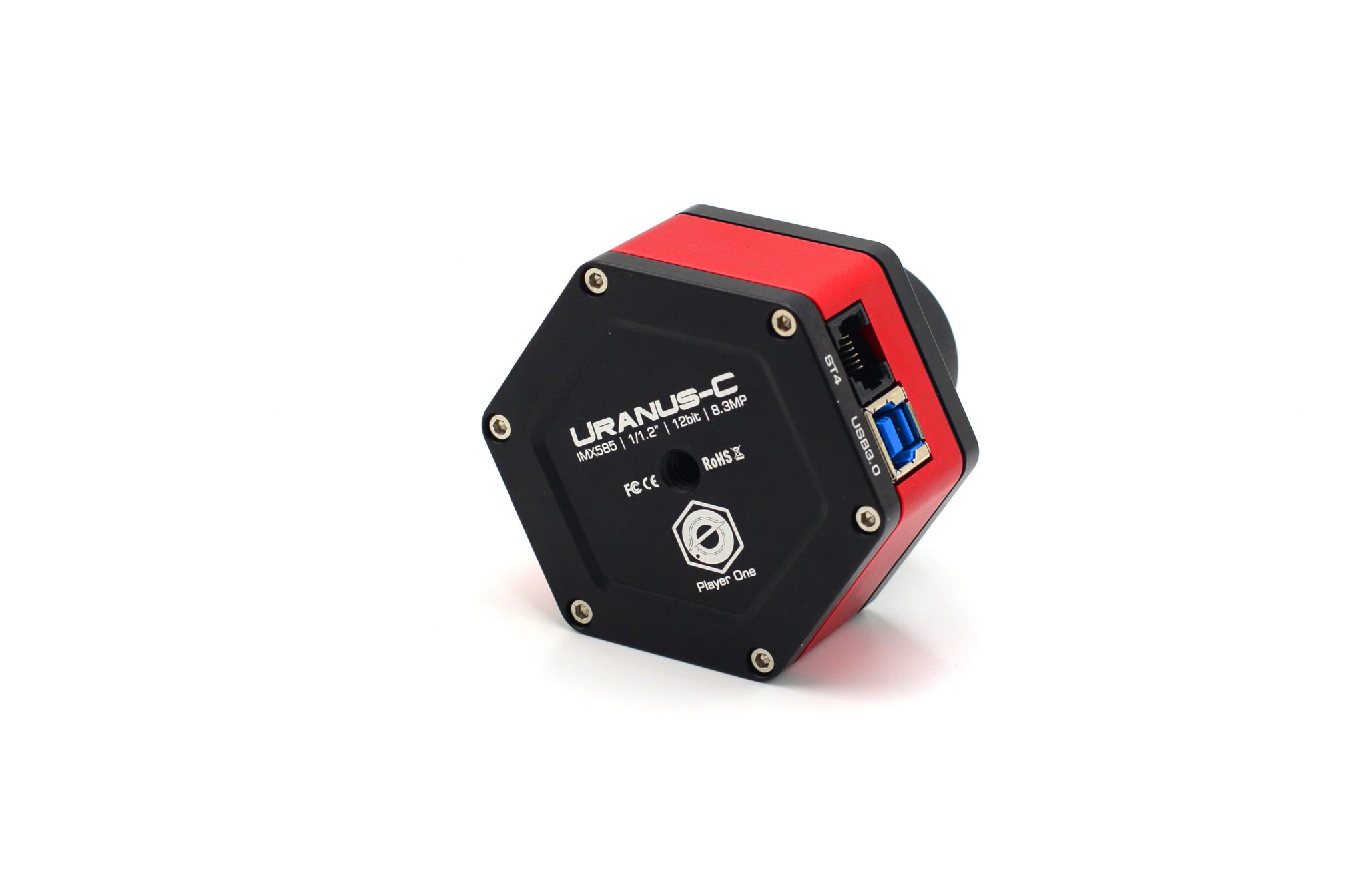
Uranus-C is (IMX585) camera developed by Player One Astronomy, which adopts the newest Sony IMX585 1/1.2” format color sensor. The 2.9um pixel size accommodates a well depth of 38.8Ke with a total of 8.3MP (the resolution is 3856*2180), and the diagonal is 12.85mm.
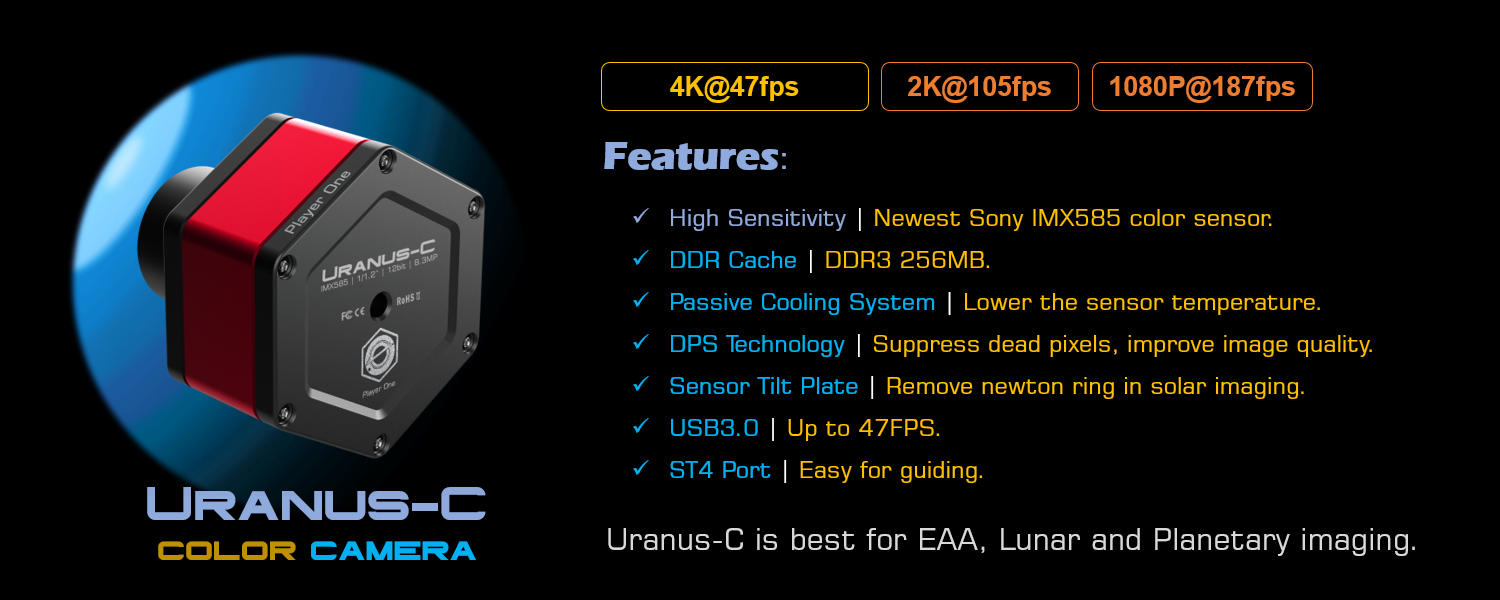
STARVIS 2 Technology
Uranus-C (IMX585) and Mars-C II (IMX662) based on Sony newest STARVIS 2 technology, it is back-illuminated pixel technology used in CMOS image sensors.
Format
Uranus-C (IMX585) has 1/1.2″ format, this size is quite big for imaging.
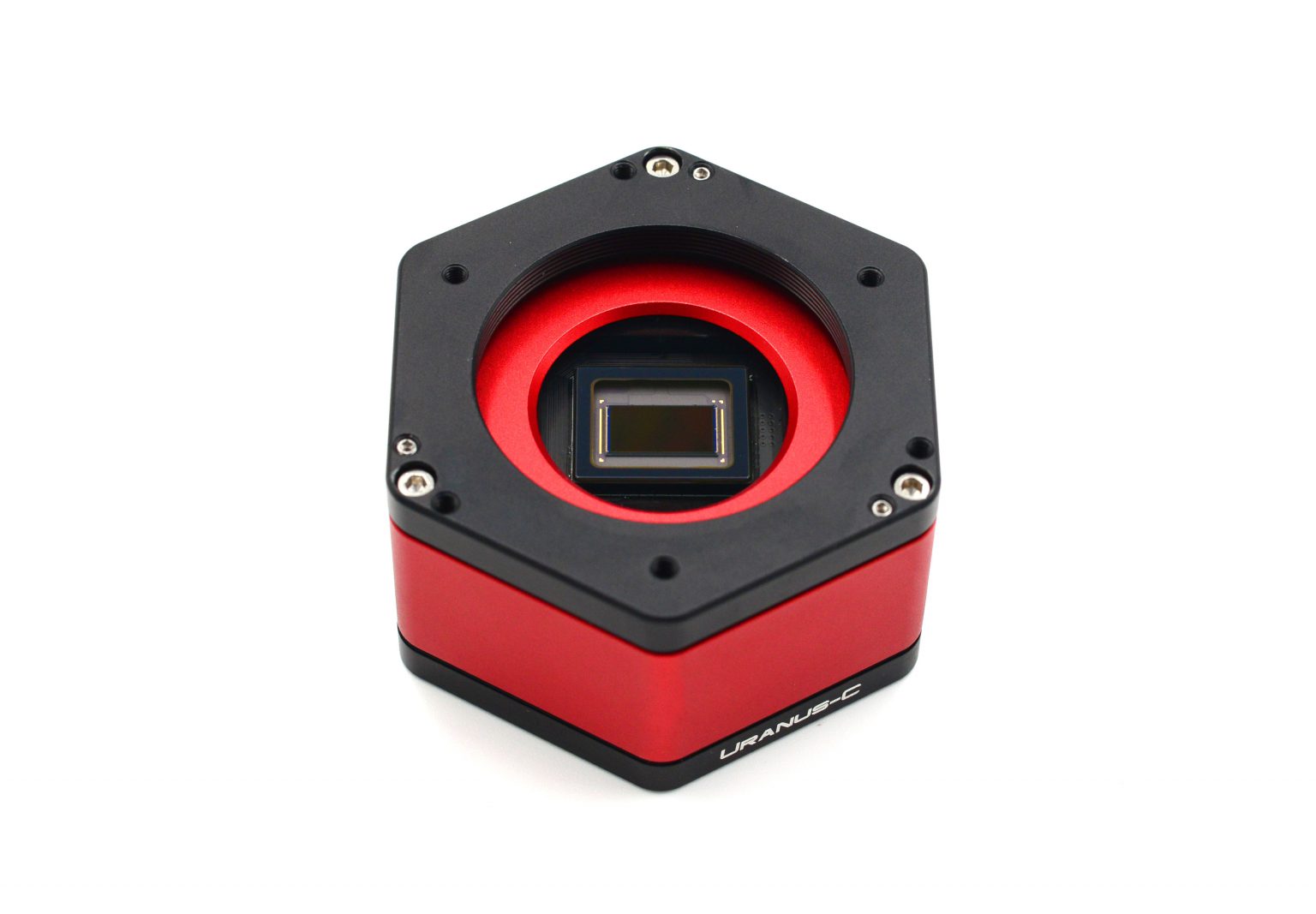
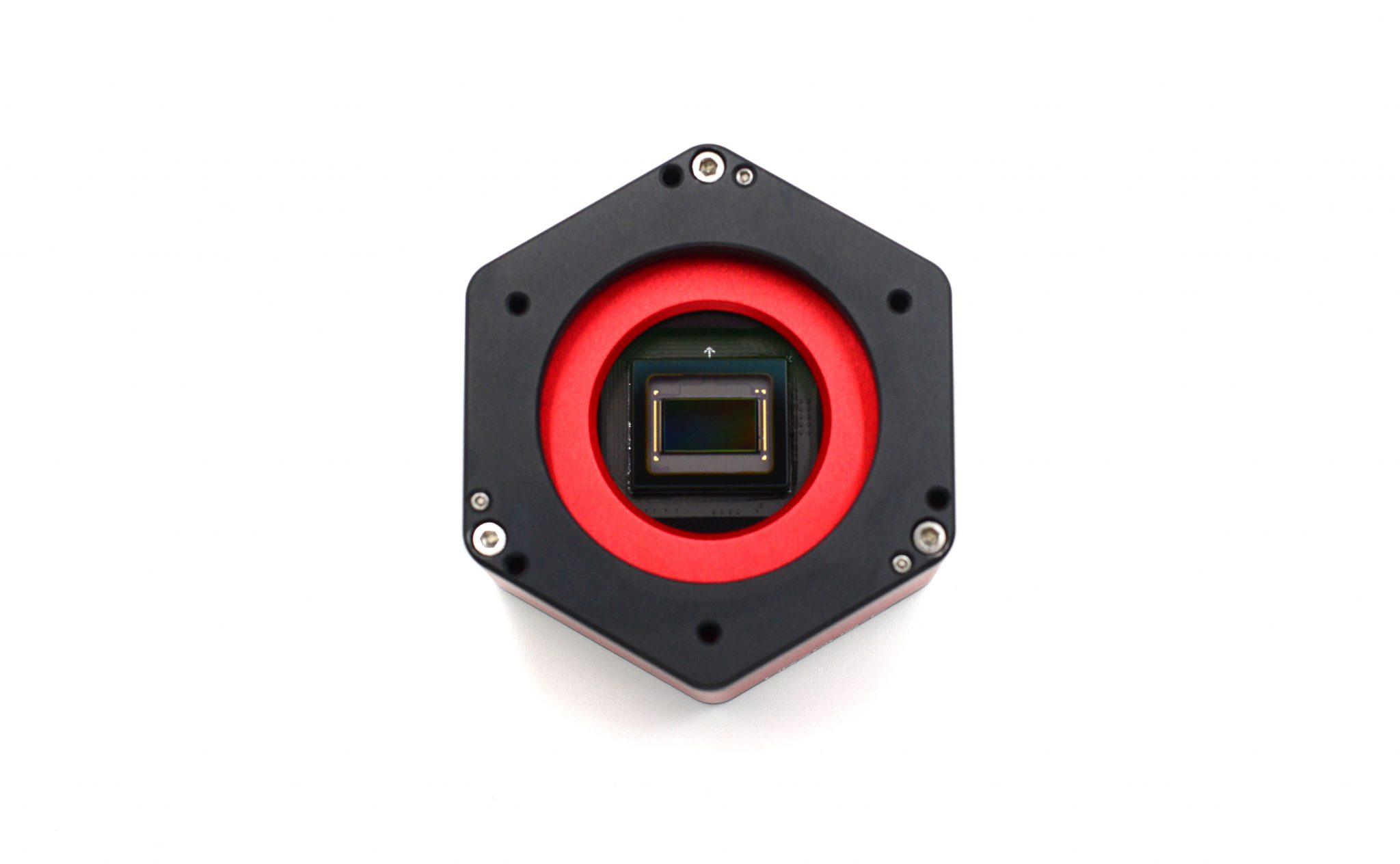
Non-Amp-Glow
Biggest supprise of Uranus-C (IMX585) camera is, its dark frame is totally “dark”, whatever we strength the curve, there is no AMP glow at all!
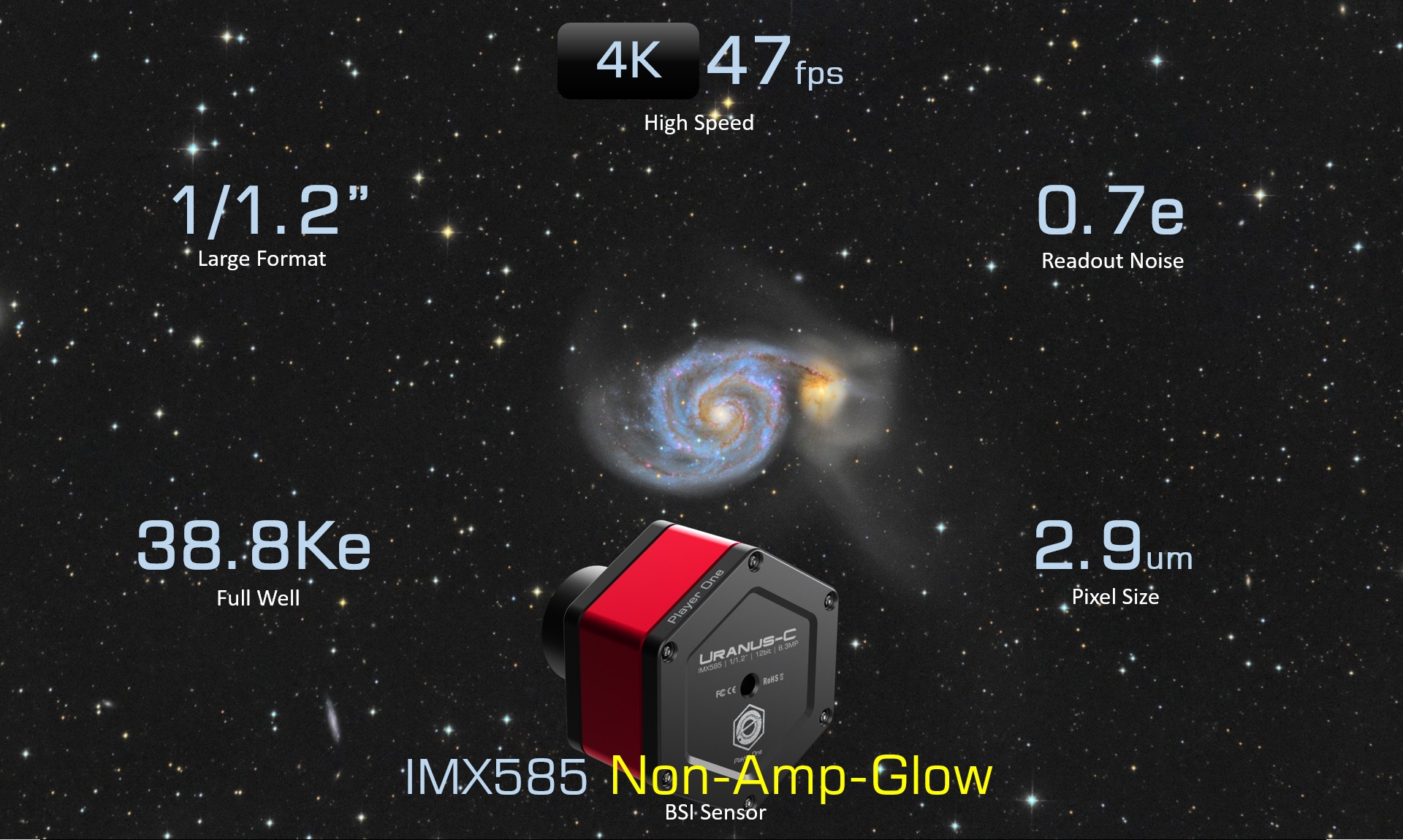
Non-Amp-Glow can give us very clean background, much easier to get high quaility images.
Uranus-C camera also very good for lunar and planetary imaging, its 1/1.2″ big sensor can make mosaic moon more efficient.
Cutting-edge Design
The planetary cameras developed by Player One Astronomy uses a scientific and technological regular hexagon to construct the main body line, supplemented by round chamfers to achieve both rigidity and flexibility. The positive orange, which is imply solar, is matched with the low-key and steady black, and the super-fine frosting process on the entire surface makes the camera look luxurious and cool, highlighting the style of high-end players, can’t take my eyes off.
2nd Gen – Sensor Tilt Plate
When taking deepsky objects, using sensor tilt plate can get a much smaller field curvature of the telescope.
Passive Cooling System
Player One add a new feature called Passive Cooling System to conduct the heat from the sensor out.
QE Curve:
Performance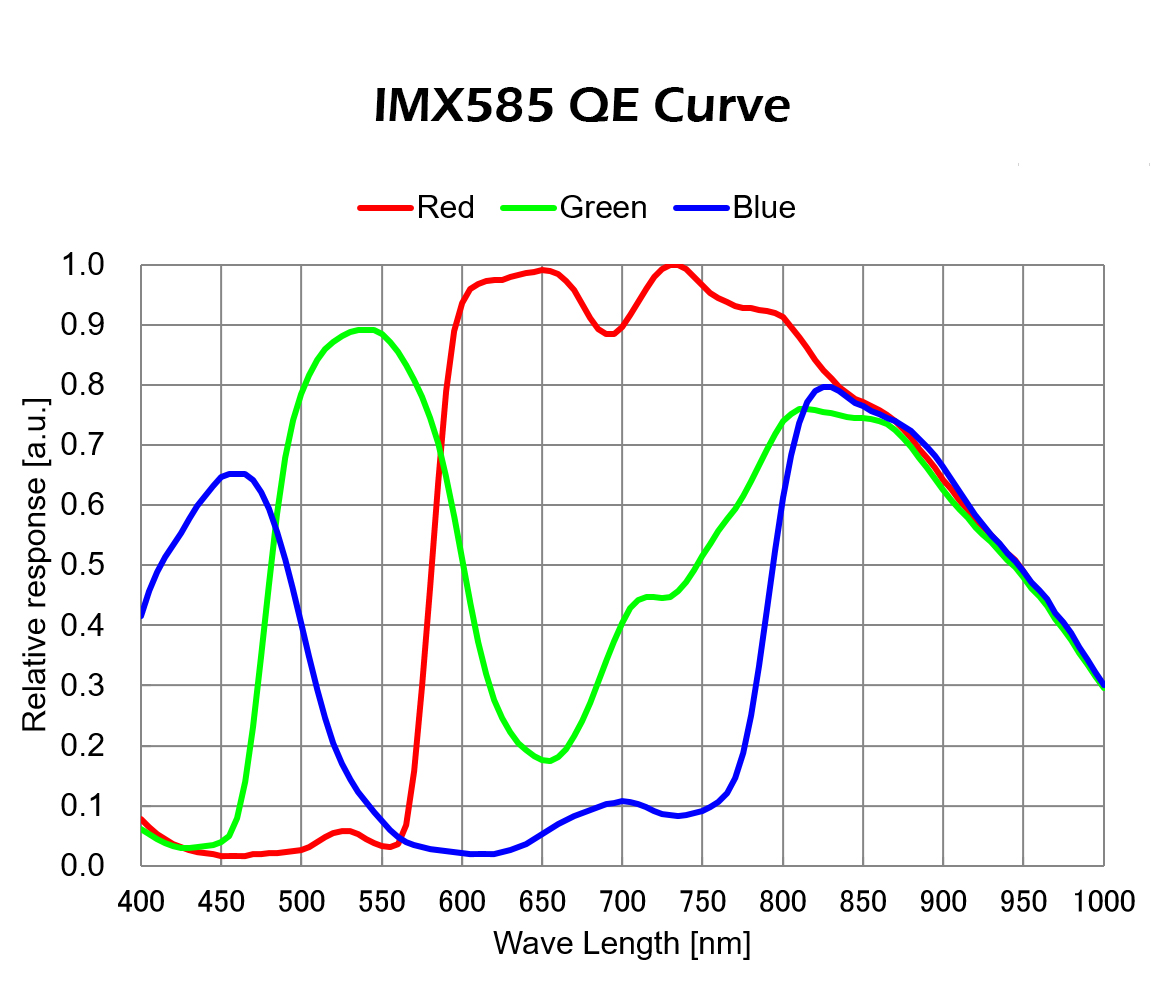
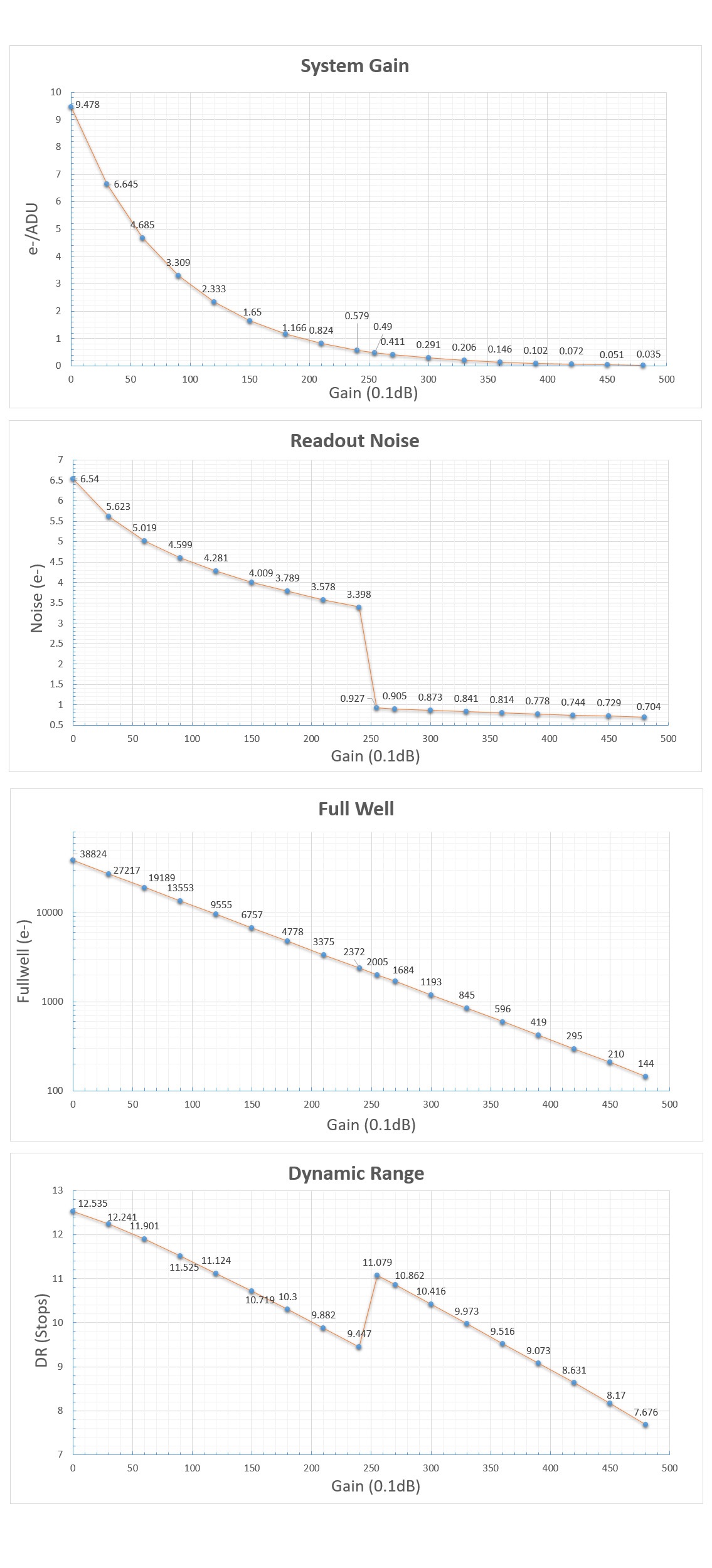
DPS technology
The planetary cameras from Player One Astronomy have DPS (Dead Pixel Suppression) technology. The DPS is anaylse many dark frames to find out thoes fixed abnormal pixel and record the map in camera memory. In imaging, each exposure frames, thoes position of dead pixels will be given a median value according to the active pixels around that abnormal pixel.
Overvoltage and overcurrent protection mechanism
Player One cameras produced by the number one player ensures the safety of your camera and other equipment through overvoltage and overcurrent protection mechanisms.
Data Port
When the camera is connected to the USB3.0 interface and full-resolution preview is used, it can reach 47 FPS in RAW8 mode (10bit ADC). When recording images, since the actual writing speed will be affected by the writing speed of the hard disk itself, when the hard disk writing speed is slow, the recording may not reach the theoretical speed. It is recommended that you use a high-quality solid state drive to record data to give full play to the performance of the camera.
Readout Noise
Regarding readout noise, we solemnly promise that all values are obtained from actual tests. And for users, you could use Sharpcap 4 for testing. SC4 has a function called Sensor Analysis, provide a very simple way to test readout noise.
256M DDR3 Cache
Player One Astronomy cameras are the first one who adpots the DDR3 cache in all planetary cameras in the world! It helps stabilize and secure data transmission, it effectively avoids frame dropping and greatly reduces readnoise.
With the DDR3 cache, the camera does not have high demands on computing needs any longer, it will still has excellent performance even if it is connected to a USB 2.0 port.
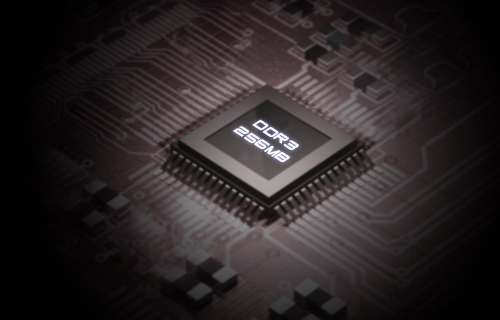
Tecnologia DPS
Le camere di Player One Astronomy possiedono la tecnologia DPS (Dead Pixel Suppression). DPS analizza molti dark frames per trovare pixel anomali. Tutti i pixel morti dell'immagine (inclusi sia i pixel caldi che i pixel freddi) vengono spazzati via. La funzione DPS è attiva durante l'intera sessione di imaging.
Meccanisco di protezione da sovratensione e sovracorrente.
Le camere Player One assicurano la sicurezza delle proprie camere e delle attrezzature attraverso un meccanisco di protezione dalla sovratensione e sovracorrente.
Data Port
Quando la camera è collegata alla porta USB3.0 e viene utilizzata la preview in full-resolution può raggiungere 47 FPS in modalità 10 bit (RAW8). Durante la registrazione di immagini, poiché la velocità di scrittura effettiva sarà influenzata dalla velocità di scrittura del disco rigido stesso, quando la velocità di scrittura del disco rigido è lenta, la registrazione potrebbe non raggiungere la velocità teorica. Si consiglia di utilizzare un'unità a stato solido di alta qualità per registrare i dati per sfruttare appieno le prestazioni della camera.
Utilizzare il cavo guida ST4 per collegare la telecamera e la porta AUTO GUIDE della montatura equatoriale per autoguidare.
| Sensor |
New SONY IMX585 1/1.2" CMOS (color) |
|---|---|
| Diagonal |
12.85mm |
| Total Pixels |
8.3 Mega Pixels |
| Max Resolution |
3856×2180 |
| Pixel Size |
2.9μm |
| Chip Size |
11.2mm×6.3mm |
| Frame Rate |
47FPS(10bit) |
| Shutter |
Rolling shutter |
| Exposure Range |
32μs-2000s |
| Readout Noise |
6.5-0.7e |
| QE Peak |
≈85% |
| Full Well |
38.8k e |
| ADC |
12 bit |
| Data Port |
USB3.0/USB2.0 |
| Adapter |
1.25″ / M42X0.75 |
| Back Focal Length |
12.5mm |
| Protective Window |
AR coating |
| Diameter |
66mm |
| Weight |
180g |
| Resolution and FPS |
Under USB3.0 mode |
| Product Status | New |
|---|---|
| Package width | 9 cm |
| Package height | 8 cm |
| Package depth | 20 cm |
| No. of parcels | 1 |




